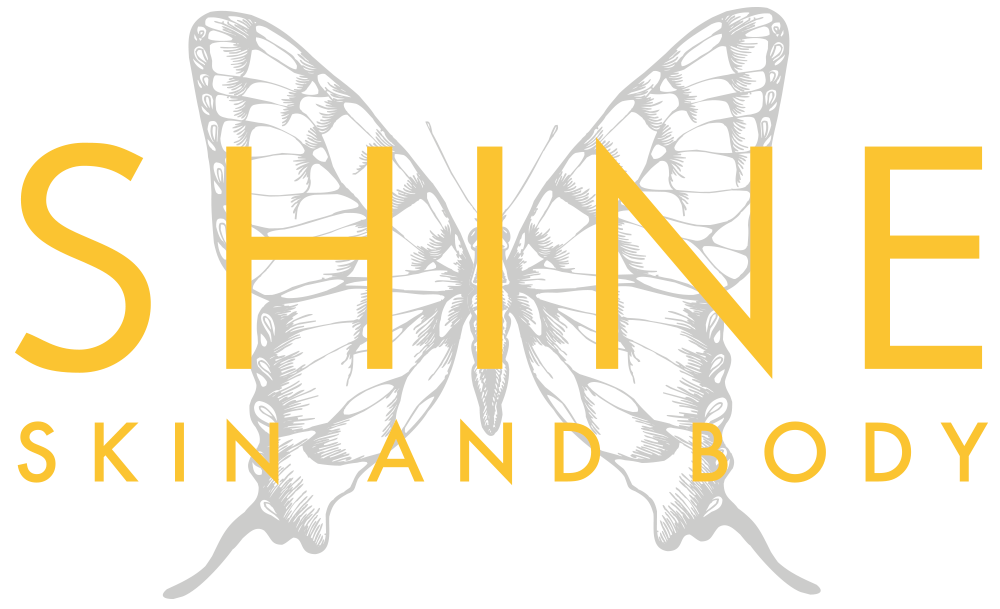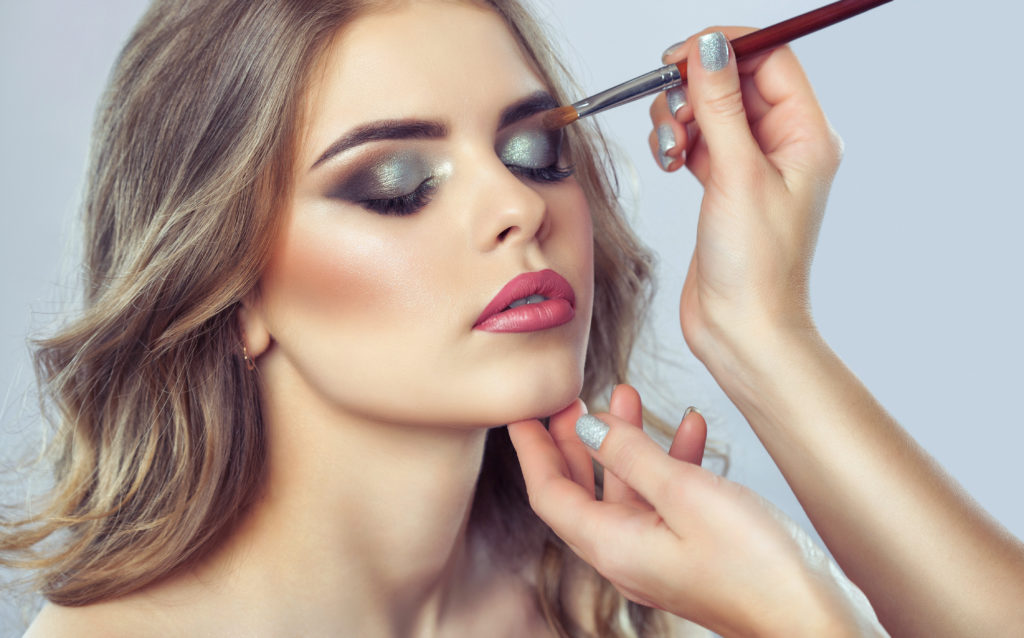acne advice, acne solutions page, shine skin solutions, Uncategorized
Does makeup really cause acne?
Make-up gets a bad rap as the cause of acne. Whilst in can be a cause, it isn’t the only cause. Here is a little information about what ingredients to keep an eye out for, how you will know if it is your make-up and what you can do.
Where is this typically seen on the skin?
Either an all over and even spread of congestion or localised on certain parts of the face. Most common areas seen are on or under the cheekbones and temples or just in front of the ears(where blusher and bronzer sit) and milia around the eyes
What ingredients are you looking for?
Most of you have probably heard of the comedogenic scale. It is a list that displays a rating for the tendency of ingredients to clog pores, which may cause acne. The ratings listed here have been derived and compiled from various sources, including the Journal of American Academy of Dermatology.
0 – Not Likely to Clog Pores
1 – Low
2 – Moderately Low
3 – Moderate
4 – Fairly High
5 – High
The below ingredients are a 5 on the scale and found in a lot of makeup.
-Ethylhexyl palmitate, Isopropyl myristate, Myristyl Myristate, Myristyl lactate, Isopropyl isostearate, Isostearyl isostearate,
Fatty Acid Esters are what we really should be looking out for, but trying to memorise their tricky names is hard. Esters are the combination of Alcohols with Fatty Acids.
Fatty Acids are best for a drier skin that has little oil as they are quite nourishing, but they are food for p.acnes (the acne causing bacteria) in an oilier skin and can be comedogenic. Fatty Acids are not to be confused with EFAs, these are much different.
Fatty Acid Esters are much more comedogenic on the skin because of the reaction the Alcohol has on the Acid when combined. some examples are Isopropyl Palmitate, Isopropyl Isostearate and Ethylhexyl Palmitate.
One of the Esters I want to point out is Ethylhexyl Palmitate. It is the second ingredient in a prominent bronzers, Talc being number one. Nearly all who stop using these powders find their skin clears up.
Bismuth Oxychloride is said to be better for skin than Talc and is often found in powders. It’s heavier than Talc and has a crystalline structure, meaning these crystals can get stuck inside the pores, not only contributing to congestion but also has the potential to irritate sensitive skins or rosacea. This is more of an issue when it is the main ingredient in powder make up.
Red Dyes (D&C Red) are red tints and pigments used in blush, eyeshadow and lipstick and are derived from coal tar which is extremely comedogenic. This explains those deep blackheads some get directly on the lip line and why the cheekbones are usually the worst!
Why do they put those ingredients in?
Fatty Acids are used as thickeners and emollients and give a creamy consistency.
Fatty Acid Esters are used in cosmetics because they don’t feel as oily as Fatty Acids and other emollients. They also give skin a smooth texture. The interesting thing here is that even though the Esters don’t feel as rich or oily, they are actually much worse for congestion!
Bismuth Oxychloride is used in cosmetics because it has a shimmery, pearlescent appearance and adheres well to skin.
Red Dyes are used to give pigment to blush, eyeshadow and lipstick for example.
Does that mean no-one can use those ingredients?
The effect of comedogenic ingredients are more likely seen in those with more oil flow, or those already with congestion or acne. This is because their skin naturally has a high cell turnover rate, so more dead skin needs to shed off.
Drier skins or those with no family history of acne are a lot less likely to be affected by these ingredients but I wouldn’t say that they are exempt.
Congestion always starts with a blocked pore, but it’s not just makeup that’s to blame. Some people may cleanse or exfoliate incorrectly, or their skin is dehydrated from over stripping or under-hydrating, leading to excess dead skin build up. And it’s these factors that need to be taken into consideration. Having an improper skincare routine can allow makeup that was never the problem, to become a problem in those who we may not have expected.
What kind of breakouts are they normally?
Mostly blackheads and whiteheads concentrated to one or more areas, that can eventually develop into pimples if not treated due to bacteria build up. Milia can sometimes appear as a once off or in a patch.
Congestion is always going to be the most common lesion to see on the skin because these ingredients are essentially causing a blockage inside the pore. It’s once those pores become inflamed or bacteria builds up that it will develop into a pimple. This can be due to things like dirty makeup brushes, improper extracting at home/work etc, not removing make up well or at all, hormonal or dietary changes for example. Sometimes only one or two milia may show up on the skin, which is ok as once they are removed generally they won’t come back. But when someone has a genetic history of milia, they are more prone and make up can exacerbate it. Meaning they could have cheeks full of them as well as the whiteheads and blackheads!
Why does it affect the skin?
All skins have pores all over that produce oil as a protective mechanism and everyone has different amounts of oil flow depending on their DNA. The skin has a cell turnover process where new cells are born in the lower layers and rise up to the surface to shed off. These old dead skin cells can shed off daily. If the opening of the pore becomes blocked, then there is no way this old dead skin can shed off. This is how congestion begins. Comedogenic ingredients are what block the pore and prevent them eliminating debris.
If foundation is the cause how will it show up in the skin? Where?
Because foundation is applied all over the face, it has the potential to cause congestion all over. Those with a lot more oil flow are more likely to experience this, and their blackheads may appear to be quite large. Whereas, if it is someone with a relatively normal amount of oil flow, they may still notice some bigger blackheads, but just in the center panel of the face.
How can we help as beauty therapists?
Extraction facials will clear the skin up. The severity of the condition will determine how many treatments are needed and the frequency. If the client is non-compliant and still using the products causing it in the first place, then it will come back.
How is it fixed?
Throw out the comedogenic makeup!!!! Finding out exactly what it is that is to blame and removing it from the picture.
Stop sleeping in it!!!!! Having emergency makeup wipes around is much better than the damage this does.
Properly remove make up at night time! No removing the leftovers around the eyes in the morning! (so many do this)
Clean makeup brushes regularly to ensure no bacterial build up. If they have been used for a long time without cleaning, best to chuck them and get new ones.
Change to mineral makeup! In saying that more people are switching over to mineral, but mineral doesn’t necessarily mean non-comedogenic. So, we really need to keep our eyes on the ingredient listings. We have now made up cards in the salon that you can pick up with your next facial to help you.


